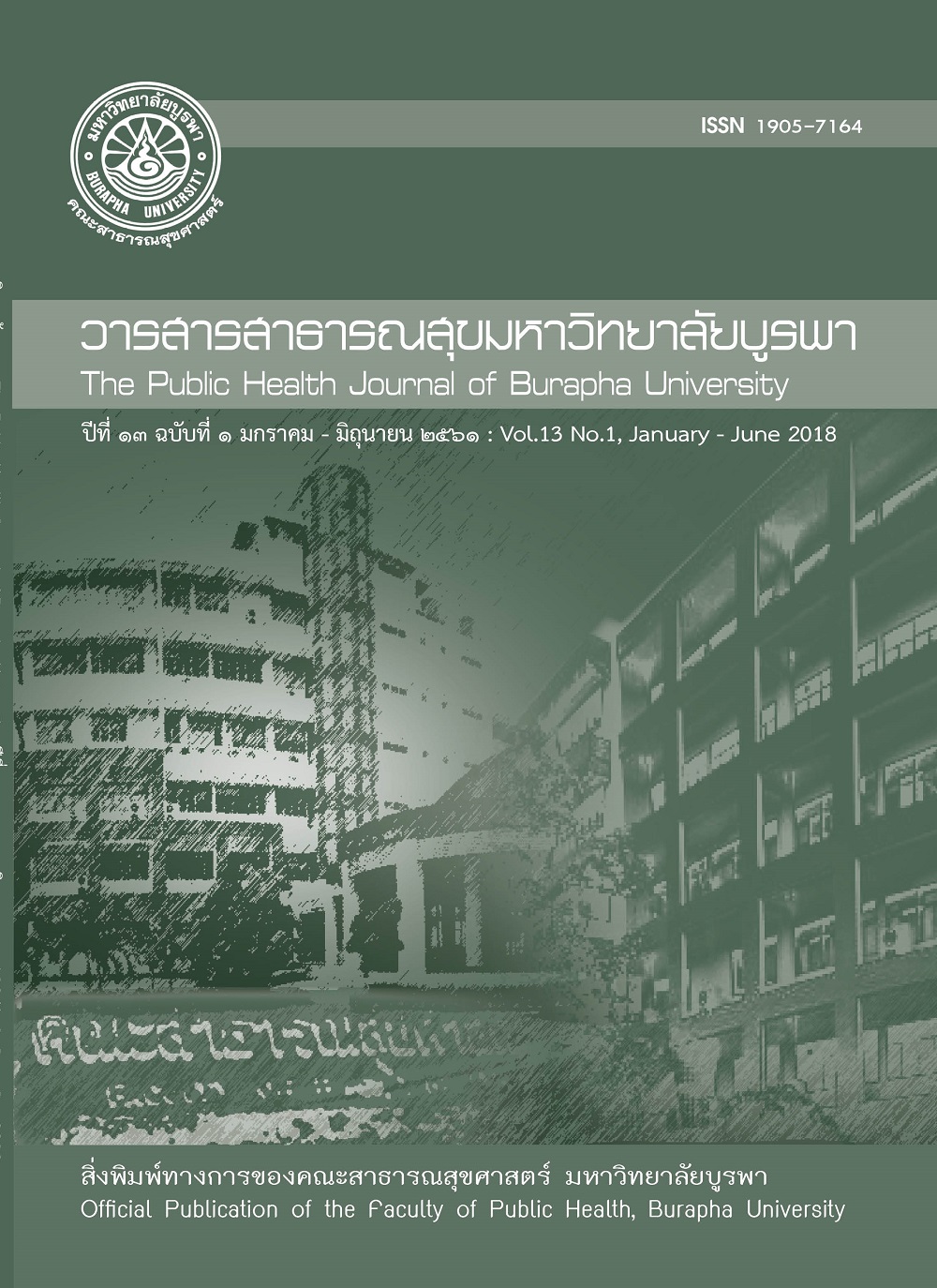Prevalence of HBsAg and Anti-HCV among HIV-infected Injecting Drug Users in the Northern Region of Thailand
Main Article Content
บทคัดย่อ
In 2017, the World Health Organization (WHO) reported the burden of HIV- Anti-HCV co-infection that was 2.75 million of whom 1.3 million are Injecting Drug Users (IDUs). As for HIV- HBsAg co-infection estimated around 2.6 million. The burden of these co-infections is greatest in the African and South East Asia Regions. The northern region of Thailand is the top of high prevalence HIV infection. It is bloodborne viruses transmitted primarily through sexual contact and injection drug use. Moreover, the transmission routes are the same at risk for Hepatitis B Virus Infection (HBsAg) and Hepatitis C Virus Infection (Anti-HCV). This study was aimed to assess the situation and prevalence of HBsAg and Anti-HCV co-infection with HIV among IDUs. The study was carried on in Chiang Rai, Chiang Mai, and Phayao ProvinceThe cross-sectional study design was completely collected through questionnaire and blood sample with used standard respondent-driven sampling technique (SRD). The prevalence of HBsAg and Anti-HCV among HIV patients with IDUs in 2015 were found 13.4%, 77.6% of 67 cases respectively. The HIV co-infection was found 9% (male 74.3%). There was only 17.9% of received hepatitis treatment. This study may guide the planning to treat HBsAg and Anti-HCV among HIV patients with IDUs and form or shape a surveillance program to prevent all in case of patient and others. It can then be expected that the vaccine developing as the opportunity to be successful.
Article Details
เอกสารอ้างอิง
Shepard CW, Finelli L, Alter MJ. Global epidemiology of hepatitis C virus infection. The Lancet Infectious Diseases. 2005;5(9):558-67.
WHO/UNAIDS. 2008 report on the global AIDS epidemic. 2008.
Mark S. Sulkowski RDM, Shruti H. Mehta, Richard E. Chaisson, David L. Thomas. Hepatitis C and Progression of HIV Disease. JAMA. 2002;288(2):199-206.
Cooper CL, Mills E, Wabwire BO, Ford N, Olupot-Olupot P. Chronic viral hepatitis may diminish the gains of HIV antiretroviral therapy in sub-Saharan Africa. Int J Infect Dis. 2009;13(3):302-6.
Johnston LG, Holman A, Dahoma M, Miller LA, Kim E, Mussa M, et al. HIV risk and the overlap of injecting drug use and high-risk sexual behaviours among men who have sex with men in Zanzibar (Unguja), Tanzania. Int J Drug Policy. 2010;21(6):485-92.
Kanna Hayashi LT, Nadia Fairbairn, Karyn Kaplan, Paisan Suwannawong, Evan Wood, Thomas Kerr. Drug-related harm among people who inject drugs in Thailand: summary findings from the Mitsampan Community Research Project. Harm Reduction Journal. 2013;10(21):1-9.
Degenhardt L, Charlson F, Stanaway J, Larney S, Alexander LT, Hickman M, et al. Estimating the burden of disease attributable to injecting drug use as a risk factor for HIV, hepatitis C, and hepatitis B: findings from the Global Burden of Disease Study 2013. The Lancet Infectious Diseases. 2016;16(12):1385-98.
Zhou YH, Yao ZH, Liu FL, Li H, Jiang L, Zhu JW, et al. High prevalence of HIV, HCV, HBV and co-infection and associated risk factors among injecting drug users in Yunnan province, China. PLoS One. 2012;7(8):e42937.
Jamieson DJ, Skunodom N, Chaowanachan T, Roongpisuthipong A, Bower WA, Chotpitayasunondh T, et al. Infection with hepatitis C virus among HIV-infected pregnant women in Thailand. Infect Dis Obstet Gynecol. 2008;2008:840948.
Oramasionwu CU, Kashuba AD, Napravnik S, Wohl DA, Mao L, Adimora AA. Non-initiation of hepatitis C virus antiviral therapy in patients with human immunodeficiency virus/hepatitis C virus co-infection. World J Hepatol. 2016;8(7):368-75.
Rebecca J. Garten JZ, Shenghan Lai, Wei Liu, Jie Chen, Xiao-Fang Yu. Coinfection with HIV and Hepatitis C Virus among Injection Drug Users in Southern China. Clinical Infectious Diseases. 2005;41(1):18-24.
Nikolopoulos GK, Kostaki EG, Paraskevis D. Overview of HIV molecular epidemiology among people who inject drugs in Europe and Asia. Infect Genet Evol. 2016;46:256-68.
Grady BP, Nanlohy NM, van Baarle D. HCV monoinfection and HIV/HCV coinfection enhance T-cell immune senescence in injecting drug users early during infection. Immun Ageing. 2016;13:10.
Berenguer J, Rivero A, Jarrin I, Nunez MJ, Vivancos MJ, Crespo M, et al. Human Immunodeficiency Virus/Hepatitis C Virus Coinfection in Spain: Prevalence and Patient Characteristics. Open Forum Infect Dis. 2016;3(2):ofw059.
Peierdun Mijiti ZY, Maimaitili Wubuli, Pan Kejun, Halmurat Upur. Prevalence of HCV and HBV infection in HIV-infected patients receiving combined antiretroviral therapy and the impact of co-infections on mortality: a retrospective cohort in Xinjiang, China. Int J Clin Exp Med. 2016;9(6):10615-26.

